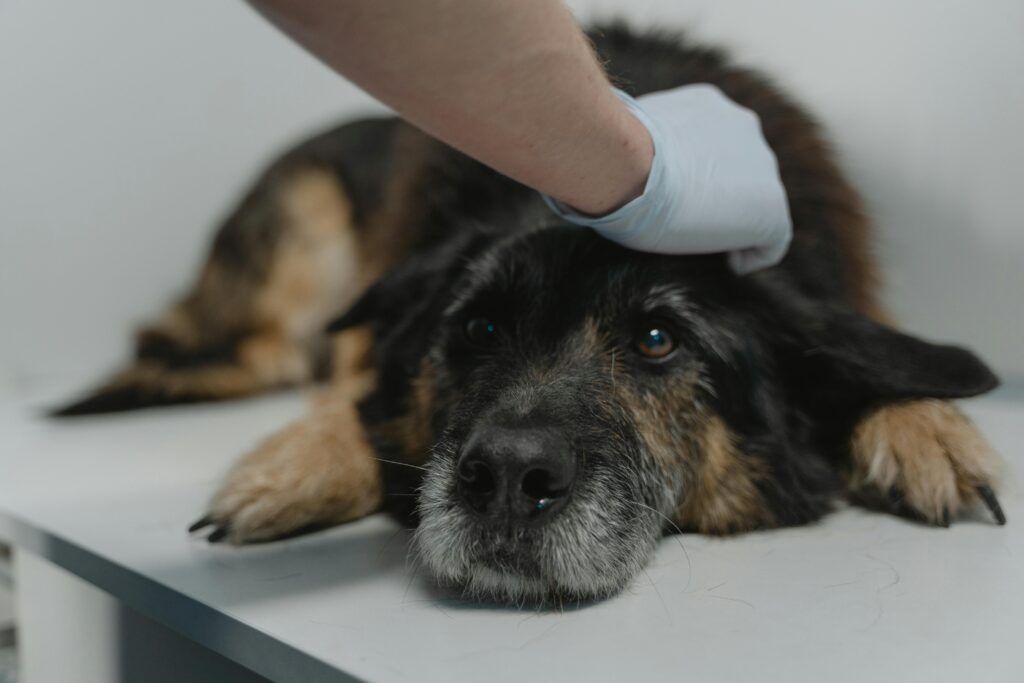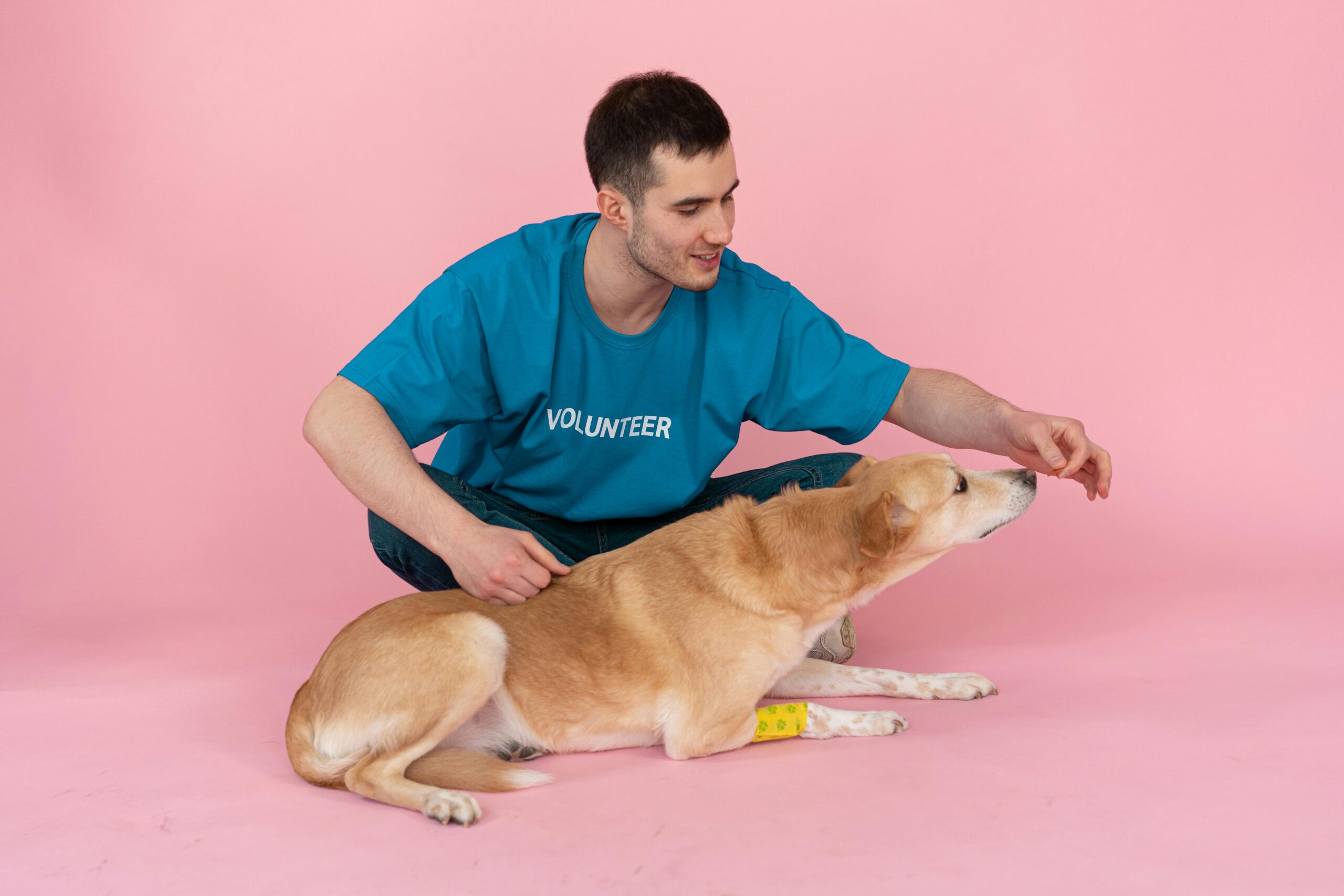Physical Therapy for Dogs
Physical therapy for dogs, also known as canine rehabilitation, is a specialized field that uses techniques adapted from human physical therapy to help dogs recover from injuries, surgeries, or manage chronic conditions. When you think of physical therapy, chances are you imagine humans recovering from surgery or injury with the help of professionals and specialized exercises. But what about our four-legged companions? Yes, dogs can benefit immensely from physical therapy too! Whether your pup is recovering from an injury, surgery, or simply struggling with mobility as they age, canine physical therapy can make a world of difference. This holistic, non-invasive approach helps dogs regain movement, reduce pain, and live fuller, happier lives.
Dogs are not just pets—they’re family. And just like any family member, when they hurt, we want to do everything in our power to help them heal. Physical therapy is one of the most effective and humane ways to aid in a dog’s recovery, manage chronic conditions, and improve their overall wellbeing. Let’s dive into the wonderful world of dog rehab and discover why it’s more popular—and more important—than ever.
Understanding Canine Physical Therapy
What is Canine Physical Therapy?
Canine physical therapy, also known as canine rehabilitation, involves the use of targeted physical techniques and modalities to restore function, reduce pain, and improve the quality of life for dogs. Think of it as the dog-friendly version of physiotherapy for humans. It combines a range of practices such as exercises, massages, hydrotherapy, and laser treatments, all tailored to a dog’s individual needs.
The process usually begins with an in-depth assessment by a certified canine rehabilitation therapist or a veterinarian specializing in rehabilitation. They’ll evaluate your dog’s physical condition, mobility issues, pain levels, and any underlying conditions. Based on this evaluation, a personalized therapy plan is crafted. This could involve strength-building exercises, mobility drills, pain relief methods, or a combination of several modalities.
It’s not just about healing after surgery. Many dogs undergo physical therapy to manage chronic conditions like arthritis, hip dysplasia, or neurological disorders. Others may be obese and require a structured plan to shed pounds safely without straining their joints. Even healthy dogs, especially athletes like agility dogs or service animals, benefit from regular physical therapy to prevent injuries and maintain peak condition.
What sets canine physical therapy apart is its gentle, compassionate approach. It’s about working with the dog, not against them. Therapists often use treats, toys, and soothing encouragement to turn each session into a positive experience. Over time, not only do dogs regain mobility—they also become more confident and comfortable in their own bodies.
History and Evolution of Dog Rehabilitation
Canine physical therapy might seem like a modern trend, but its roots stretch back decades. Initially developed in Europe, it gained serious traction in the United States during the late 1990s and early 2000s, largely thanks to the rise of holistic veterinary medicine and increased awareness of pet wellness.
In the early days, physical therapy for animals was primarily reserved for high-performing dogs—police K9s, race dogs, or agility competitors. But as the pet industry grew and dogs became increasingly integrated into our homes and hearts, demand for broader canine rehabilitation services surged. Pet owners began to see the value of extending the active years of their dogs’ lives through proactive therapy.
Institutions started offering specialized certification programs for veterinarians and vet techs, leading to a new wave of trained professionals in the field. Equipment also evolved—today’s canine rehab centers often resemble human physiotherapy clinics, complete with underwater treadmills, balance balls, and laser therapy machines.
Modern dog rehab is a blend of ancient healing wisdom and cutting-edge technology. Acupuncture is often used alongside electrical stimulation. Manual stretching goes hand in hand with computerized gait analysis. The evolution of dog rehab reflects our evolving understanding of animals—not just as pets, but as beings worthy of comprehensive, compassionate healthcare.
Benefits of Physical Therapy for Dogs
Pain Management and Relief
Pain is a silent struggle for many dogs. They can’t tell us where it hurts, and they often hide discomfort instinctively. That’s where physical therapy comes in. It’s one of the most effective ways to manage and reduce pain without relying solely on medications.
Physical therapy helps alleviate both acute and chronic pain through multiple mechanisms. For instance, gentle massages increase blood flow and reduce inflammation in sore muscles. Laser therapy targets deeper tissue pain and accelerates healing by stimulating cellular repair. Techniques like passive range-of-motion exercises keep joints lubricated and flexible, minimizing stiffness and soreness.
Hydrotherapy, one of the standout modalities in canine rehab, offers a low-impact environment where dogs can move freely without stressing their joints. This not only provides physical relief but also a psychological boost. Pain relief can dramatically improve a dog’s mood, appetite, and willingness to interact with their environment.
Unlike medications, which may come with side effects, physical therapy offers a safer, long-term solution. While some dogs may still require medication, combining it with rehab often allows for reduced dosages and better overall results.
And let’s not forget the human side—watching your dog move with less pain, wag their tail more often, or even run after a long break is one of the most heartwarming rewards for any pet parent.
Improved Mobility and Strength
One of the most noticeable benefits of physical therapy in dogs is the restoration of movement. Whether it’s a senior dog struggling to get up, a puppy born with mobility issues, or a pooch recovering from a broken limb, mobility is everything.
Through targeted exercises, therapists help rebuild muscle strength, improve coordination, and retrain the body to move efficiently. Strengthening the core, limbs, and stabilizing muscles reduces the risk of further injury and improves balance.
Therapists use tools like balance boards, cavaletti rails (raised bars to step over), and resistance bands to create fun, interactive routines. These aren’t just workouts—they’re confidence boosters. Many dogs who were once hesitant to walk across a room gradually begin to run, jump, and play again.
Consistency is key. Just like humans recovering from surgery or injury, dogs need regular sessions and home exercises to see lasting improvement. Most therapy plans also include progress tracking so that pet parents can witness their dog’s journey from shaky steps to steady strides.
Physical therapy doesn’t just treat the problem—it builds a foundation for lifelong strength and mobility. And the best part? Dogs love it. Once they realize these sessions make them feel better, they often walk into therapy tails wagging and eyes bright with anticipation.
Enhanced Quality of Life
Imagine being in constant discomfort or unable to move freely. That’s the daily reality for many dogs dealing with health issues. Physical therapy isn’t just about physical changes—it’s about giving dogs their joy back.
Improved mobility and reduced pain lead to greater independence. A dog that once needed help getting outside might now trot to the door on their own. They can once again enjoy their walks, play with their favorite toy, or cuddle on the couch without struggling.
The mental health benefits are significant, too. Pain and inactivity can lead to depression in dogs, just like in humans. Physical therapy provides structure, stimulation, and positive reinforcement—all crucial elements for a happy, engaged pet.
Many pet owners report a complete transformation in their dog’s personality after starting therapy. Dogs become more social, less anxious, and generally more content. For senior dogs, especially, rehab can add quality years to their lives.
And for pet parents? It offers peace of mind. Knowing you’re doing everything possible to help your furry friend thrive is deeply rewarding. It’s not just about extending life—it’s about enhancing it, one paw at a time.
Continuing with the next 6-10 headings and their subheadings’ content (1,200+ words):
Common Conditions Treated with Dog Physical Therapy
Arthritis and Joint Issues
Arthritis is one of the most common health problems in aging dogs, and it’s also one of the most painful. Just like in humans, canine arthritis causes inflammation in the joints, leading to stiffness, discomfort, and reduced mobility. Watching your dog struggle to climb stairs or even hesitate before jumping onto the couch can be heartbreaking. Fortunately, physical therapy offers a way to manage this condition effectively—without solely relying on painkillers.
Through targeted exercises and therapeutic techniques, physical therapy helps reduce the inflammation and stiffness associated with arthritis. One of the most effective methods used is hydrotherapy. The buoyancy of water takes pressure off painful joints, allowing dogs to move more freely and comfortably while strengthening the surrounding muscles. This helps stabilize the joints and improves mobility over time.
Massage therapy is also a powerful tool. It enhances blood flow, which helps bring healing nutrients to the affected areas while removing toxins and reducing swelling. Combine that with stretching exercises and joint mobilization techniques, and you have a complete, pain-reducing regimen that’s not only effective but also enjoyable for your dog.
In addition to therapy sessions, many rehab plans include lifestyle and nutrition advice. Therapists often recommend joint supplements, weight control strategies, and modifications to your home environment (like ramps or padded flooring) to reduce strain on arthritic joints. It’s a 360-degree approach that not only treats symptoms but addresses the root cause of discomfort.
The best part? Physical therapy for arthritis is safe, customizable, and works at your dog’s pace. It helps slow the progression of the disease and offers your pet a more active, fulfilling life in their golden years.
Post-Surgical Recovery
Surgery is tough on any body, but especially for dogs, who don’t understand why they’re suddenly limited or in pain. Whether it’s a torn ACL (cranial cruciate ligament), hip replacement, or spinal surgery, the post-operative period is crucial for recovery. That’s where physical therapy becomes a game changer.
Immediately after surgery, the primary goals are to control pain, reduce inflammation, and prevent muscle atrophy. Dogs confined to rest can lose significant muscle mass within just a few weeks. Physical therapy helps maintain muscle tone through gentle, passive movements and controlled exercises that gradually reintroduce movement without risking injury.
Therapists work closely with veterinarians to design a customized plan based on the specific procedure your dog has undergone. For example, a dog recovering from a cruciate ligament repair might start with laser therapy to reduce swelling, followed by underwater treadmill sessions to rebuild strength without putting pressure on the joint.
Post-surgical rehab isn’t just about physical recovery—it also helps dogs emotionally. Surgery and restricted movement can make dogs anxious or depressed. Rehabilitation sessions provide mental stimulation and interaction that improve their mood and speed up healing.
Perhaps most importantly, a structured rehab program reduces the chances of complications or secondary injuries. Dogs often compensate for a weak leg or stiff back by shifting weight unnaturally, leading to further issues. Therapy ensures that recovery happens in a balanced, safe, and supported way.
In short, post-op physical therapy bridges the gap between surgery and full recovery. It minimizes setbacks, maximizes outcomes, and helps your dog get back on their paws faster.
Neurological Disorders
Neurological conditions can be scary for both dogs and their owners. These disorders affect the nervous system and can lead to symptoms like loss of coordination, muscle weakness, tremors, or even paralysis. Common conditions include intervertebral disc disease (IVDD), degenerative myelopathy, and nerve injuries. While the diagnosis might seem overwhelming, physical therapy can offer a beacon of hope.
Canine rehab for neurological issues focuses on neuroplasticity—the brain and spinal cord’s ability to rewire and adapt. With repeated, focused movement and stimulation, therapy helps dogs relearn motor skills and regain control over their bodies. The earlier the intervention, the better the results.
Balance boards, coordination exercises, and gentle resistance work help improve muscle tone and proprioception (a dog’s sense of body position). Tactile stimulation, like textured mats or walking over different surfaces, encourages sensory feedback and neurological response. Some dogs also benefit from electrostimulation therapy, which uses gentle currents to activate nerves and muscles.
Hydrotherapy plays a significant role here, too. The resistance of water helps build strength while offering a safe space for dogs to practice walking, even if they have limited coordination. It’s low-risk and incredibly motivating.
Of course, not all neurological disorders are curable. But therapy can dramatically improve quality of life, slow the progression of degenerative diseases, and give dogs the best chance at functional independence. It also gives pet owners a proactive way to support their dog’s journey—one paw at a time.
Obesity and Weight Management
Obesity in dogs is more common than many realize. It’s estimated that over half of domestic dogs in the U.S. are overweight or obese—and the consequences are serious. Excess weight puts added stress on joints, increases the risk of diabetes, heart disease, and reduces lifespan. Fortunately, physical therapy offers a structured, supervised path to healthy weight loss.
Unlike basic walks or unsupervised play, therapy sessions are tailored to the individual dog’s needs and physical limitations. Overweight dogs often have difficulty exercising due to joint pain or respiratory issues. That’s where hydrotherapy becomes incredibly useful. Water exercises burn calories while being easy on the joints, allowing obese dogs to move freely and build stamina without hurting themselves.
Therapists also use low-impact equipment like treadmills, balance boards, and resistance bands to build muscle and burn fat gradually. These sessions are combined with a nutritional consultation to create a comprehensive weight-loss plan. Many rehab clinics partner with vets to track metrics like body fat percentage, muscle mass, and caloric intake.
The benefits go beyond physical health. As dogs shed extra pounds, they become more energetic, happier, and less prone to injury. Weight loss also relieves pressure on the heart and lungs, improving cardiovascular function and overall vitality.
Physical therapy for weight management isn’t just about looking better—it’s about living longer and better. It empowers dogs to enjoy the things they love again, whether that’s running in the yard, going on hikes, or simply getting up on the couch for a cuddle. It’s a journey of transformation, one session at a time.
Types of Physical Therapy Techniques for Dogs

Hydrotherapy
Hydrotherapy is hands down one of the most effective—and fun—forms of physical therapy for dogs. It uses water resistance and buoyancy to create a safe, low-impact environment for exercise and rehabilitation. Whether your dog is recovering from surgery, managing arthritis, or trying to lose weight, hydrotherapy offers amazing benefits without the strain of land-based activities.
There are two main types of hydrotherapy for dogs: underwater treadmill therapy and swimming. In an underwater treadmill, the dog walks on a treadmill submerged in water. The water level can be adjusted to reduce weight-bearing, and the treadmill speed can be controlled for gradual progress. Swimming, on the other hand, allows full-body movement and is great for cardiovascular health and muscle tone.
Why is hydrotherapy so effective? First, water supports the body and reduces the stress on joints, making it ideal for dogs with pain or weakness. Second, it provides natural resistance, helping to build strength and endurance. Third, it promotes better circulation and can speed up healing.
Most dogs love hydrotherapy—especially if they’re water lovers to begin with. It feels like play but works like therapy. Even anxious or hesitant dogs often warm up to the experience with a little encouragement and positive reinforcement.
Therapists carefully monitor the dog’s movements, breathing, and fatigue levels to ensure safety and maximize results. With regular sessions, hydrotherapy can dramatically improve mobility, reduce pain, and give dogs a renewed zest for life.
Continuing with the next headings 11-15 and their subheadings’ content to complete the full article:
Laser Therapy
Laser therapy might sound high-tech—and that’s because it is! But it’s also a surprisingly gentle and effective treatment for dogs suffering from a range of physical conditions. Used frequently in canine physical therapy, laser therapy (also called cold laser or low-level laser therapy) uses light energy to penetrate tissue and stimulate cellular healing processes. It’s painless, non-invasive, and loved by both dogs and their owners.
The science behind laser therapy is based on photobiomodulation. When the laser light reaches the cells, it triggers a chemical reaction that increases ATP (the energy currency of cells), promoting faster healing, reducing inflammation, and relieving pain. Think of it like jump-starting your dog’s body’s natural recovery system.
It’s especially beneficial for dogs dealing with arthritis, muscle strains, tendon injuries, and post-surgical healing. The procedure takes only a few minutes, during which the therapist gently waves a handheld laser wand over the affected area. Most dogs remain calm and even seem to enjoy the warmth.
Laser therapy is cumulative, meaning that repeated sessions build upon each other for greater results. Many physical therapy programs incorporate it as a regular part of the routine. It’s often paired with other treatments like massage or hydrotherapy to offer a multi-faceted recovery plan.
One of the biggest advantages is its versatility—it can be safely used on dogs of all sizes, ages, and breeds, and can be applied to virtually any area of the body. Whether your pup has a stubborn back pain or just underwent surgery, laser therapy is a smart, effective, and gentle addition to any rehab plan.
Massage Therapy
Who doesn’t love a good massage? Turns out, dogs are no different. Canine massage therapy is not only incredibly relaxing—it’s also therapeutic. Used in physical therapy programs for everything from muscle recovery to anxiety reduction, massage therapy offers a wealth of health benefits.
At its core, massage therapy increases blood circulation, which delivers oxygen and nutrients to muscles and tissues. This helps flush out toxins, reduce inflammation, and accelerate healing. It’s especially effective for relieving muscle tension, soreness, and stiffness—common issues in dogs with mobility problems or chronic conditions.
Trained canine massage therapists know how to locate problem areas and use various techniques such as effleurage (long gliding strokes), petrissage (kneading), and friction to manipulate muscle tissue. These techniques promote relaxation and help realign muscle fibers, making them more resilient to injury.
Massage also helps improve a dog’s flexibility and joint range of motion. It can be particularly beneficial after exercise sessions or hydrotherapy, serving as a cool-down to prevent muscle cramping and fatigue. And for dogs recovering from surgery, massage keeps the surrounding muscles supple and helps prevent scar tissue from hardening.
The emotional and mental benefits are equally important. Dogs who receive regular massages often show reduced signs of anxiety, improved sleep, and a stronger bond with their owners. It’s a therapeutic experience that soothes the body and the soul.
For pet parents looking to get involved, some therapists even teach basic massage techniques that can be performed at home—turning physical therapy into a bonding ritual.
Therapeutic Exercises
Therapeutic exercises are at the heart of any good physical therapy program for dogs. These structured, customized movements help dogs regain strength, improve balance, and rebuild coordination. Think of it as a personal training session for your pup—except tailored specifically to their physical limitations and recovery goals.
These exercises range from simple weight-shifting drills to advanced obstacle navigation, depending on the dog’s condition. Early in recovery, exercises might include passive range-of-motion stretches performed by the therapist. As the dog gains strength, they’ll progress to active tasks like sit-to-stand transitions, step-ups, or walking over cavaletti rails.
The goal is to retrain the body to move correctly and efficiently. For example, if a dog has been favoring one leg, it may have developed an uneven gait. Exercises help restore balance and symmetry, preventing further injury and promoting proper muscle use.
Therapeutic exercises also stimulate the nervous system, which is essential for dogs recovering from neurological issues. They improve proprioception (body awareness) and coordination, reducing the risk of tripping or falling.
To keep dogs engaged, therapists often use toys, treats, and praise. Every session is designed to feel like play, even though it’s structured therapy. Many exercises can be continued at home, which accelerates progress and strengthens the bond between dog and owner.
Consistency is key. With regular practice, therapeutic exercises can yield impressive results—turning weakness into strength, hesitation into confidence, and pain into power.
Signs Your Dog May Need Physical Therapy
Behavioral and Physical Symptoms
Dogs can’t tell us when they’re in pain, so it’s up to us to pay close attention to the signs. If you notice your dog limping, having trouble getting up, or avoiding stairs, these could be clear indicators that something’s wrong. But it’s not just about physical signs—behavioral changes can be just as telling.
Is your usually playful pup suddenly withdrawn? Has your dog become less active, less social, or more irritable? These changes can all be linked to underlying physical discomfort. Even subtle signs, like licking a particular leg, dragging one foot, or favoring one side of the body, can suggest that your dog is compensating for an injury or pain.
Other red flags include muscle wasting, stiffness after rest, or difficulty maintaining balance. For senior dogs, reduced interest in walks or struggling to stand from a lying position are common signals of mobility issues. For younger dogs, recovering from injury or surgery, slowed progress or reluctance to move might mean they need professional help.
Sometimes, dogs will bark or whimper when touched in specific areas. This can indicate joint, muscle, or nerve pain. Don’t ignore these vocal cues—they’re often a cry for help.
Ultimately, any deviation from your dog’s normal movement or mood is worth investigating. Early intervention with physical therapy can prevent minor issues from becoming chronic, life-altering problems. When in doubt, consult your vet—and ask if physical therapy might be right for your furry friend.
Vet Recommendations
Veterinarians are often the first line of defense when something seems off with your dog. If your vet recommends physical therapy, take it seriously. These professionals have seen the positive impact that structured rehab can have, and they understand which dogs will benefit the most.
After surgery, most vets will prescribe a specific recovery protocol that includes physical therapy to restore mobility and prevent complications. If your dog has arthritis, neurological issues, or weight problems, your vet may refer you to a certified canine rehabilitation therapist.
Working with a vet ensures that therapy is integrated into your dog’s overall health plan. Vets can provide essential diagnostic information, such as X-rays or lab results, that inform the therapist’s approach. They also monitor your dog’s progress and make adjustments as needed.
Some pet owners hesitate at the mention of physical therapy, thinking it’s too expensive or unnecessary. But the reality is, the long-term benefits often outweigh the costs. Investing in therapy now can prevent more serious (and costly) health problems down the line.
Plus, your vet might even suggest simple home-based exercises or stretches if in-clinic therapy isn’t feasible. The important thing is to start somewhere—and to start early. Physical therapy, when guided by veterinary expertise, is one of the best decisions you can make for your dog’s lifelong health and happiness.
Conclusion
Physical therapy for dogs is not just a trend—it’s a transformative health strategy that can dramatically improve your furry friend’s life. Whether your pup is recovering from surgery, managing chronic conditions, or simply slowing down with age, canine rehab offers tailored solutions that work gently and effectively. From hydrotherapy to massage and therapeutic exercises, there are countless ways to help your dog move better, feel better, and live longer.
Your dog deserves the best—and sometimes, that means more than belly rubs and treats. It means real, proactive care that prioritizes their wellbeing and gives them the tools to thrive. So don’t wait until the symptoms get worse. Take the first step today, and give your dog the healthy, active life they deserve.
FAQs
1. How do I know if my dog needs physical therapy?
Watch for signs like limping, stiffness, decreased activity, or behavioral changes. A vet can confirm if therapy is needed.
2. Is physical therapy safe for older dogs?
Absolutely. In fact, senior dogs often benefit the most. Therapy can relieve arthritis pain, improve balance, and enhance quality of life.
3. How often should my dog attend therapy sessions?
It depends on your dog’s condition. Some need weekly sessions; others may benefit from bi-weekly or monthly visits. Your therapist will customize a plan.
4. Can I do therapy exercises at home?
Yes! Many therapists provide home exercise plans to supplement in-clinic sessions. Consistency at home can speed up recovery.
5. How much does dog physical therapy cost?
Costs vary depending on the treatment type and location. Expect to pay between $50 to $100 per session, but many clinics offer package deals.
Please don’t forget to leave a review.




